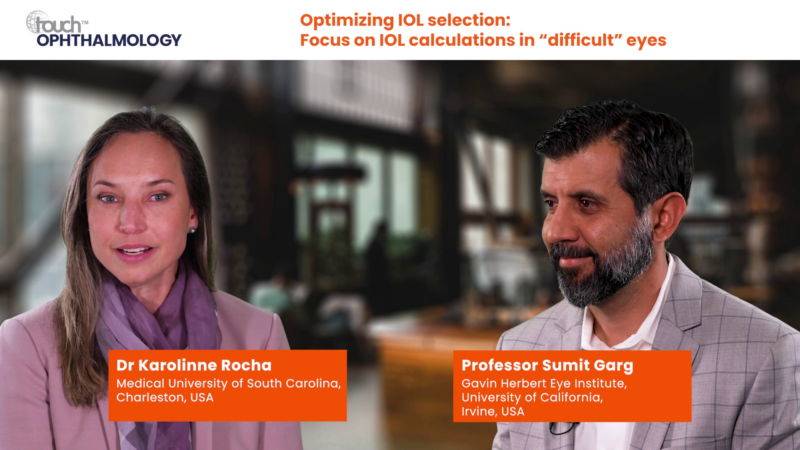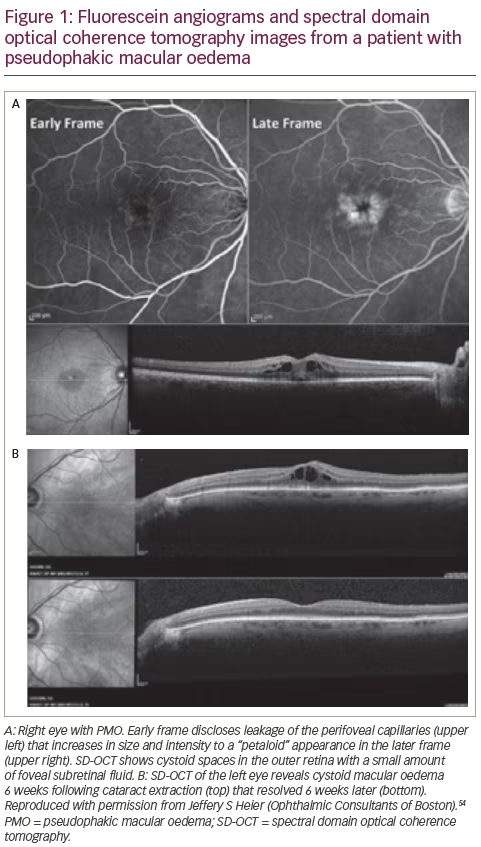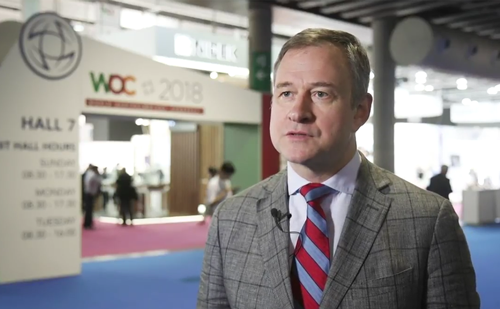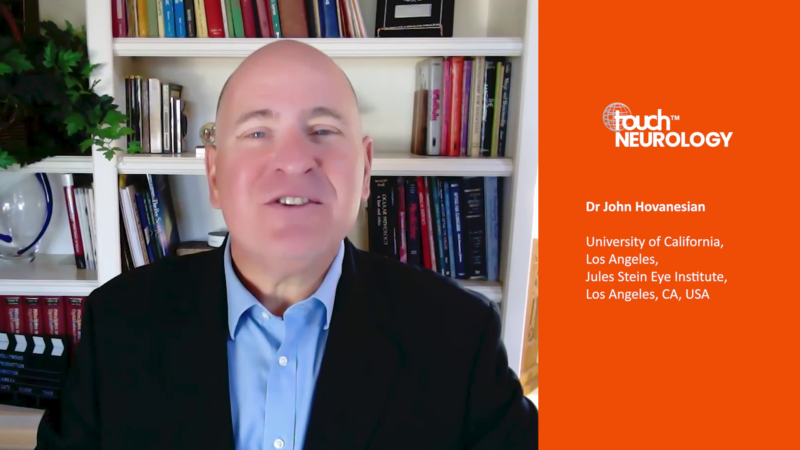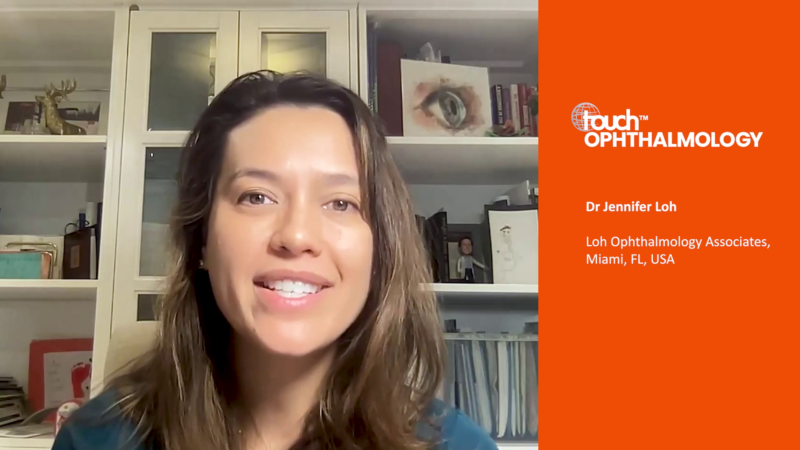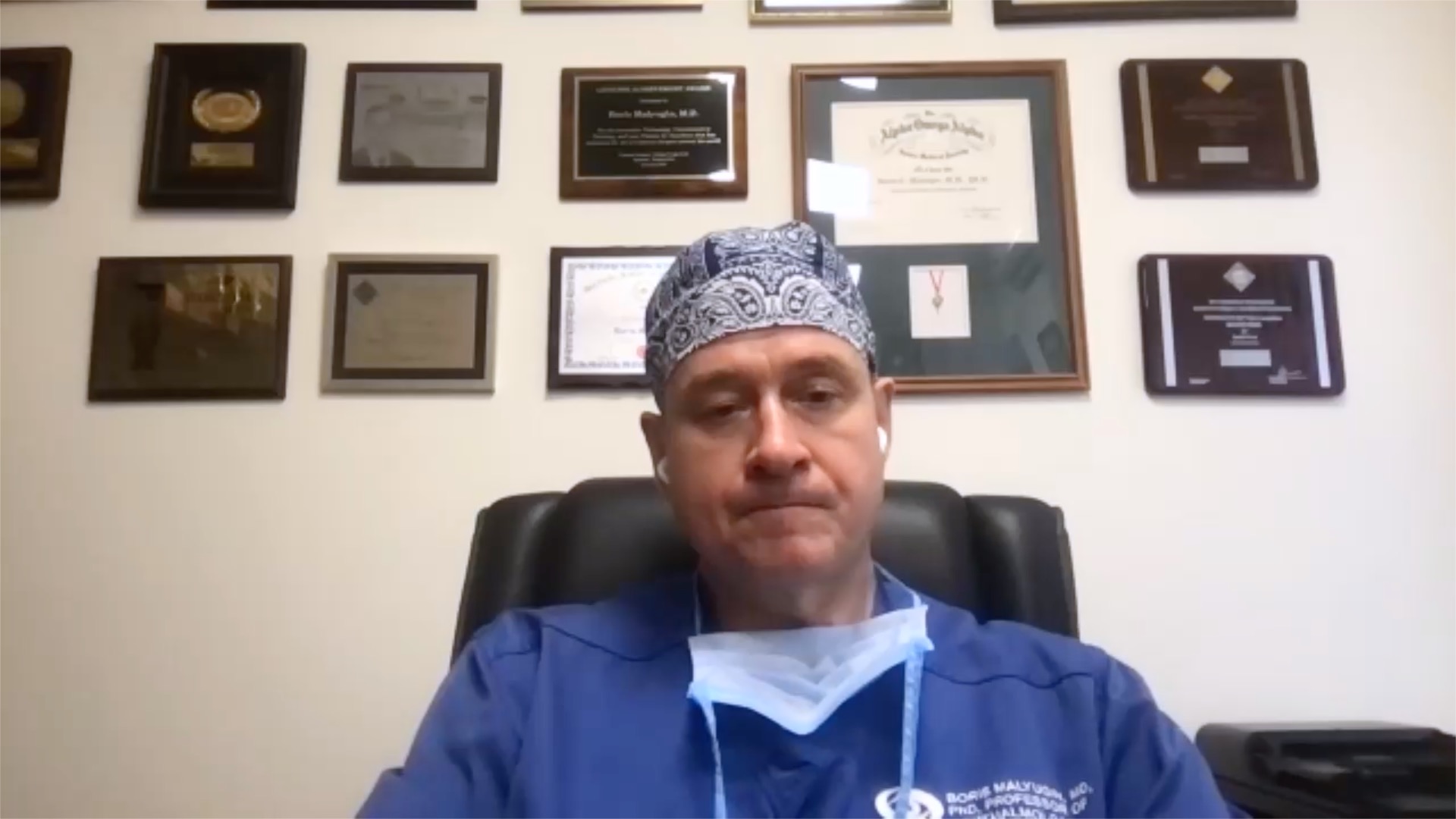touchFOCUS
 Quickfire Q&A with expert faculty.
Close
Quickfire Q&A with expert faculty.
Close
 Quickfire Q&A with expert faculty.
Close
Quickfire Q&A with expert faculty.
Close
Advances in IOL technology and power calculations: Updates and innovations
Learning Objectives
After watching this activity, participants should be better able to:
- Identify appropriate IOL power calculations, for preoperative assessment and after refractive surgery
- Describe new advancements in IOL technology for patients with cataracts
Overview
In this interview, Dr John Hovanesian answers a series of questions focused on how to effectively manage patients prior to cataract surgery and ensure the most appropriate intraocular lens (IOL) formula is used, including his views on recent advances in IOL technology.
This activity is funded by an independent medical education grant from Alcon Vision, LLC, and is jointly provided by USF Health and touchIME. read more
Target Audience
Ophthalmologists, including cataract and refractive surgeons, involved in the management of patients with cataracts.
Disclosures
USF Health adheres to the Standards for Integrity and Independence in Accredited Continuing Education. All individuals in a position to influence content have disclosed to USF Health any financial relationship with an ineligible organization. USF Health has reviewed and mitigated all relevant financial relationships related to the content of the activity. The relevant relationships are listed below. All individuals not listed have no relevant financial relationships.
Faculty
Dr John Hovanesian discloses: Consultancy fees from: Acufocus,Inc., Aerie Pharmaceuticals, Alcon, Allergan, Apellis Pharmaceuticals, Avellino Lab USA, Inc., Azura Ophthalmics, BlephExTM, Bruder Healthcare Company, BVI Medical, Centricity Vision, Inc., Cloudbreak Pharma, Cord LLC, Dompé, Eyedetec Medical, Inc., EyePoint Pharmaceuticals, Glaukos Corp, GlaxoSmithKline (GSK), Glint Pharma, Gobiquity, Hasa Optix, Horizon Therapeutics, Hoya Lens UK, ImprimisRX, Johnson & Johnson Vision, Kala Pharmaceuticals, Inc., Novartis, Ocular Therapeutix, Oculis Holding AG, Omeros, On Point Vision, Inc., Orasis Pharmaceuticals Ltd, Oyster Point Pharma, Rayner Surgical Group Ltd, Research Insight LLC, Sensimed SA, Sight Life, Sun Pharmaceuticals Industries Ltd, Tarsus Pharmaceuticals, TearLab Corporation, Thea Pharmaceuticals, Trefoil Therapeutics, Visus Therapeutics and Zeiss. Advisory board fees from: Apellis Pharmaceuticals, Bausch + Lomb, BlephExTM, Bruder Healthcare Company, BVI Medical, Cord LLC, Dompé, Eyedetec Medical, Inc., EyePoint Pharmaceuticals, Glaukos Corp, Glint Pharma, Hasa Optix, Horizon Therapeutics, Hoya Lens UK, Novartis, Ocular Therapeutix, Omeros, Orasis Pharmaceuticals Ltd, Rayner Surgical Group Ltd, Sight Life, Sight Sciences, Sun Pharmaceuticals Industries Ltd, Trefoil Therapeutics, Visus Therapeutics and Zeiss. Other Financial or Material Support (royalties, patent, etc.): Alcon, Alicia Surgery Center, Allegro Ophthalmics, Allergan, Cloudbreak Pharma, Cord LLC, CorneaGen, CRISPR therapeutics, Eyedetec Medical, Inc., Gobiquity, Inc., Guardion Health Sciences, Harvard Eye Associates, Johnson & Johnson Vision, Novartis, Ocular Therapeutix, Orasis Pharmaceuticals Ltd, Research Insight, LLC., RxSight, Sight Sciences, Sight Life, Tarsus Pharmaceuticals, TearClear, Versant Ventures and Visionary Ventures. Research fees from: Acufocus,Inc., Aerie Pharmaceuticals, Alcon, Allergan, Bausch + Lomb, Cord LLC, EyePoint Pharmaceuticals, Glaukos Corp, ImprimisRx, Johnson & Johnson Vision, Novartis, Ocular Therapeutix, Omeros, On Point Vision, Inc., Research Insight, LLC., Sight Sciences, Sun Pharmaceuticals Industries Ltd and Zeiss.
Content Reviewer
John Steven Jarstad, M.D., FAAO, FRSM-UK has no financial interests/relationships or affiliations in relation to this activity.
Touch Medical Contributors
Adriano Boasso has no financial interests/relationships or affiliations in relation to this activity.
USF Health Office of Continuing Professional Development and touchIME staff have no financial interests/relationships or affiliations in relation to this activity.
Requirements for Successful Completion
In order to receive credit for this activity, participants must review the content and complete the post-test and evaluation form. Statements of credit are awarded upon successful completion of the post-test and evaluation form.
If you have questions regarding credit please contact cpdsupport@usf.edu.
Accreditations
Physicians
This activity has been planned and implemented in accordance with the accreditation requirements and policies of the Accreditation Council for Continuing Medical Education (ACCME) through a joint providership of USF Health and touchIME. USF Health is accredited by the ACCME to provide continuing medical education for physicians.
USF Health designates this enduring material for a maximum of 0.5 AMA PRA Category 1 CreditTM. Physicians should claim only the credit commensurate with the extent of their participation in the activity.
The European Union of Medical Specialists (UEMS) – European Accreditation Council for Continuing Medical Education (EACCME) has an agreement of mutual recognition of continuing medical education (CME) credit with the American Medical Association (AMA). European physicians interested in converting AMA PRA Category 1 CreditTM into European CME credit (ECMEC) should contact the UEMS (www.uems.eu).
Advanced Practice Providers
Physician Assistants may claim a maximum of 0.5 Category 1 credits for completing this activity. NCCPA accepts AMA PRA Category 1 CreditTM from organizations accredited by ACCME or a recognized state medical society.
The AANPCP accepts certificates of participation for educational activities approved for AMA PRA Category 1 CreditTM by ACCME-accredited providers. APRNs who participate will receive a certificate of completion commensurate with the extent of their participation.
Date of original release: 14 December 2023. Date credits expire: 14 December 2024
If you have any questions regarding credit please contact cpdsupport@usf.edu.
To obtain the CE/CME credit(s) from this activity, please complete this post-activity test.
Claim CreditYou may also be interested in...

REGISTER NOW FOR FREE ACCESS TO
- 1000+ topical and insightful peer-reviewed journal articles
- 100+ hours of bite-sized congress highlights
- 10 major therapy areas packed with the latest scientific advances
- 150+ specialties offering learn-on-the-go medical education
- + Concise email updates and newsletters so you never miss out








